





Few summertime holidays elicit as much excitement as the Fourth of July, also known as Independence Day in the United States. Each year, family, friends and revelers anticipate the arrival of the holiday so they can host barbecues, enjoy the sun, listen to their favorite summertime tunes, and commemorate the freedoms afforded by the monumental events that led to the holiday’s establishment.
Independence Day became a federal holiday in 1941, but July 4th has stood as the birth of American independence for much longer. July 4th marks a pivotal moment in the American Revolution.
According to PBS, the colonies were forced to pay taxes to England’s King George III despite having no representation in the British Parliament. “Taxation without representation” became a battle cry and was one of several grievances colonists had with Great Britain.
Conflict between the colonies had been going on for at least a year before the colonies convened a Continental Congress in Philadelphia in June of 1776, says Military.com.
On July 2, 1776, the Continental Congress voted in favor of independence from England. Two days later, on July 4, 1776, delegates from the 13 colonies adopted the Declaration of Independence.
The Declaration of Independence is an historic document drafted by Thomas Jefferson. Jefferson was considered the strongest and most eloquent writer of the declaration writing committee charged with putting the colonies’ sentiments into words.
Richard Henry Lee of Virginia was one of the first people to present a resolution for American independence, and his commentary was the impetus for the formal Declaration of Independence.
A total of 86 changes were made to Jefferson’s original draft until the final version was adopted. The signing of the document helped to solidify independence, and eventually lead to the formation of the United States of America.
A total of 56 delegates signed the document. Although John Hancock’s signature is the largest, it did not hold more weight than the other signatures. Rather, rumor has it, Hancock signed it so large so
See FOURTH, P10
By Laurene Weste Santa Clarita City Mayor Pro Tem
The City of Santa Clarita’s Fourth of July Parade is more than an event—it’s a legacy. It brings together generations to celebrate our nation’s independence and our community’s deep-rooted history.

This year’s theme, “Home is Where the Hart is … Welcome Hart Park!” is especially fitting as the City takes ownership of the historic park in Downtown Newhall. Our history runs deep with Western pride, and Hart Park stands at the heart of that legacy.
Our annual parade is the crown jewel of local events. As the longest-running and one of the most highly attended traditions in Santa Clarita, it captures the very essence of what makes our City special: a sense of history, hometown pride, gratitude for our Veterans and a strong spirit of unity.
Hart Park, the most significant historical site in our City, represents the legacy of William S. Hart; a silent film star, local icon and a true pioneer. Hart wasn’t just a movie cowboy; he built the foundation of our community. He established the community’s very first movie theater and to this day, our high school district bears his name. The Fourth of July Parade has proudly

marched through Santa Clarita nearly every single year since 1932. Even during the COVID-19 pandemic, a scaled-down “mini parade” kept the tradition alive.
This beloved event draws tens of thousands of residents and visitors who come together to celebrate our nation’s birthday, our City’s unique story and the community we continue to build together. Whether it’s your first time or your fiftieth, this year’s parade will be an unforgettable tribute to Hart Park, our heritage and the amazing community we are all proud to call home.
God Bless America!
By Bill Miranda
Santa Clarita Mayor

As we gather this Fourth of July, we are reminded of the deep significance of this day — a celebration of our nation’s independence and the freedoms we hold dear. It is a time to honor the brave men and women of our Armed Forces, past and present, whose sacrifices have made it possible for us to live, work and raise our families in peace. From the ability to speak freely to the chance to pursue our dreams, the liberties we enjoy every day are a direct result of their courage and commitment.
This holiday is more than just a celebration — it’s a powerful reminder of what unites us as Americans. And here in Santa Clarita, it’s also a chance to come together as a community and reflect on the place we’re proud to call home.
This year, we’re embracing a theme close to our hearts — “Home is Where the Hart Is – Welcome, Hart Park.” For decades, William S. Hart Park has

Gideons 4.11 Freedom’s Way Baptist Church 4.12 Al Malaikah Shriners 4.13 S.C. Wildcats Football & Cheer 4.14
SCV Democrats 4.15 Stonewall Democratic Club 4.16 Wm. S. Hart Baseball & Softball 4.17 Falun Dafa 5.01
Santa Clarita Auto Dealers Assn. 5.02
DM: SCV Man of the Year 5.03
SFV Marine Corps League 1277 5.04
Henry Rodriguez, State Farm 5.05
ACS Relay For Life SCV
5.06
S.C. Atheists & Free Thinkers 5.07 Derek & Debbie Smith 5.08
St. Stephen’s Episcopal Church
5.09 - none5.10 Chugging Toward Treatment
5.11
Olive Branch Theatricals
5.12 The Learning Experience 5.13 Surface Busters LLC 5.14
Saugus Spartans Cheer 5.15
Berean Baptist Family Fellowship 5.16
Jim Bloomfield
5.17 Empire Dance Center
5.18
Layout Plumbing 5.19
Toyz R Us




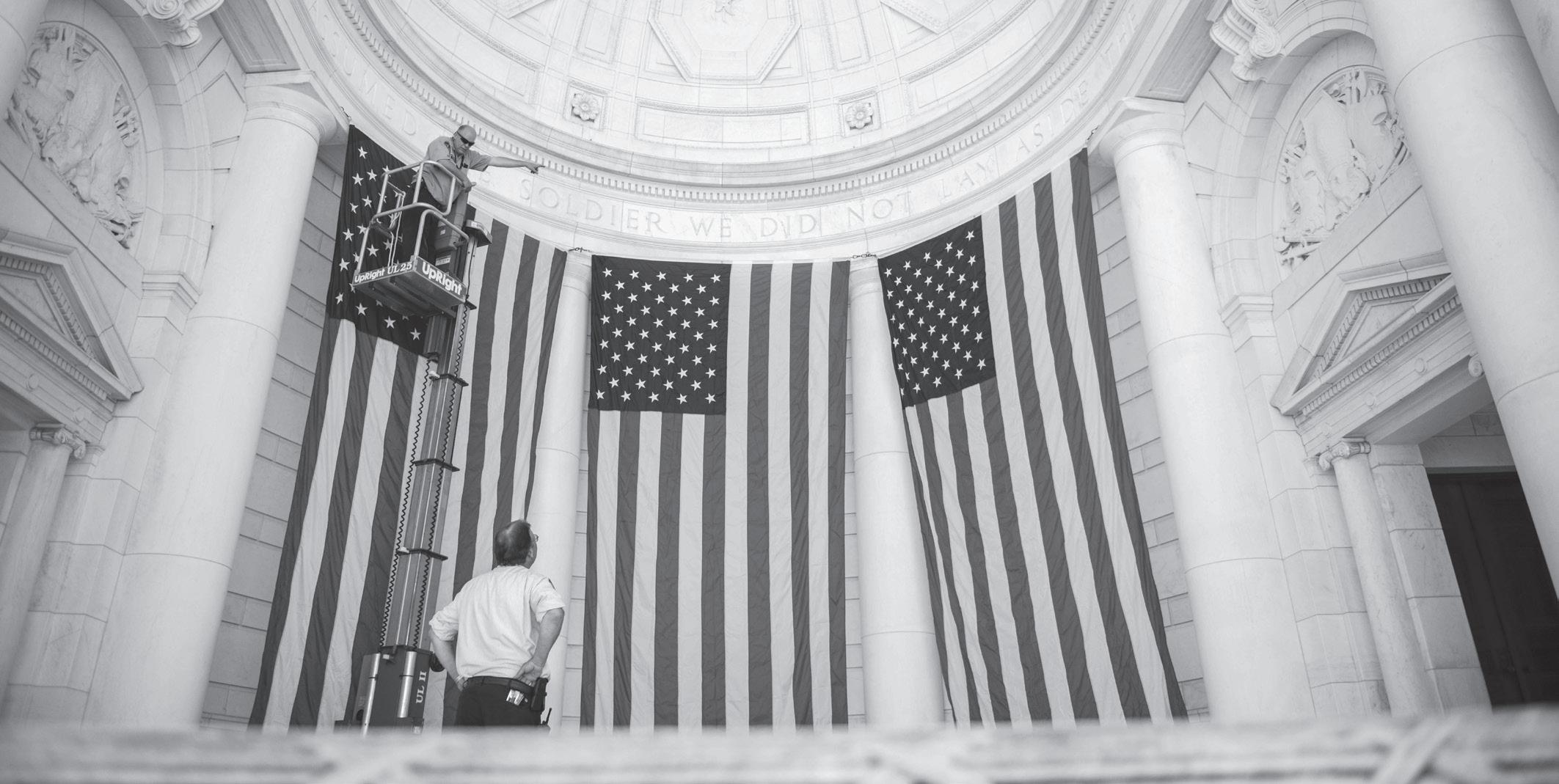
The American flag symbolizes many things to many people. While the American flag is proudly displayed in millions of buildings and homes across the United States year-round, it tends to draw special attention each summer, when Americans celebrate their independence on July 4.
The Flag Code formalizes and unifies the standards of respect that must be given to the flag, even containing specific instructions regarding how the flag should not be used. The following are some of the rules that govern how to display the American flag.
Raising and Lowering the Flag
According to USFlag.org, the American flag should be raised quickly and lowered slowly and ceremoniously. While the Flag Code suggests the flag should be displayed only between sunrise and sunset, if it is displayed at night, it should be illuminated. The flag should be saluted as it is hoisted, and when lowered that salute should be held until the flag is unsnapped from the halyard or through the final note of music, whichever is the longest.
When displayed indoors, the flag should be displayed to the right of the speaker, staging area or sanctuary. Any additional flags hanging in the room should always hang to the left of the American flag. When flags are grouped for display, the American flag should be in the center and at the highest point of any flag.
In Mourning
The American flag is often displayed in mourning. When placing the flag at half staff, first hoist it to the peak for an instant before lowering it to a position halfway between the top and bottom of the staff. During mourning, when the time comes to lower the flag, it should once again be momentarily raised to the peak before it is lowered.
EThe American flag is flown at half staff when mourning designated, principal government leaders. It also must be flown at half staff upon presidential or gubernatorial order.
When covering a casket, the American flag should be placed with the union at the head and over the left shoulder. The flag should never be lowered into the grave
Parading the Flag
When the American flag is carried in a procession, such as in a parade, the flag should always be to the right of the marchers when it is the lone flag being represented. When other flags are carried, the American flag may be centered in front of the others or carried to their right. Parade audiences should salute the flag as it passes in the procession.
Flag Restrictions
There are many conditions under which the American flag is not to be used. These include:
The flag should never be used as a decoration. Use bunting to decorate with the colors of the American flag, always ensuring the blue stripe of the bunting is on top.
The flag should not be used as part of advertising. The flag also should not be embroidered, printed or impressed on articles such as cushions, napkins, boxes, or anything considered temporary that is likely to be discarded after use.
The flag should not be used as part of a costume. The uniforms of military personnel, firemen, policemen, and members of patriotic organizations are permitted to wear American flag insignias on their uniforms.
The flag is not to be used as a receptacle to carry,

ach year on July 4, Americans celebrate the birth of their nation and independence from Great Britain. This day marks the anniversary of the presentation and acceptance of the Declaration of Independence, signed 242 years ago on July 4, 1776.
The Declaration of Independence began as a letter to Britain’s King George to explain why the Continental Congress was interested in declaring independence from Great Britain. The writing of the declaration began on July 2 and the final wording was established on July 4.
Besides the usual, another way to commemorate Independence Day is to educate oneself about the many historical and entertaining facts that surround the day. The following are some interesting details about the origins of Independence Day and the celebrations that surround it.
Although 56 people eventually signed the Declaration of Independence, only John Hancock signed the document on July 4, 1776. The rest added their names later on. John Hancock’s signature is ornate and widely recognized. Putting your “John Hancock” on a document has become synonymous with the process of signing something.
The Declaration of Independence was adopted while the Continental Congress met in Philadelphia at the Pennsylvania Statehouse. That building is now known as Independence Hall.
The average age of the signers of the Declaration of Independence was 45. The youngest person to sign was Thomas Lynch, Jr., who was 27 when he signed the document. Benjamin Franklin, at age 70, was the oldest signee.
John Adams and Thomas Jefferson were the only signees who went on to serve as presidents. Coincidentally, Jefferson and Adams both died on July 4, 1826, within hours of each other.
Philadelphia is the birth place of much American history and is home to the Liberty Bell. Each Independence Day, the Liberty Bell is tapped (not rung, as the vibration would further damage the cracked bell) 13 times in honor of the original 13 American colonies.
The original 13 American colonies were located all along the eastern seaboard. They include Virginia, New York, New Hampshire, Massachusetts Bay, Maryland, Connecticut, Rhode Island, Delaware, North Carolina, South Carolina, New Jersey, Pennsylvania, and Georgia.
Independence was gained in 1776, and the first celebration took place in Philadelphia four days later. The White House held its first Independence Day festivities in 1801.
Benjamin Franklin proposed that the turkey be the national bird of the United States. He was overruled.
The only copy of the engrossed and signed Declaration of Independence is in the National Archives in Washington, D.C. Independence Day is a time for hot dogs, ice cream and, of course, revisiting America’s history.



























Signal Staff
For more than 200 years, the American flag has been flown across the nation as a symbol of allegiance and pride, and the Santa Clarita Valley is no exception. In fact, Santa Clarita is known as a patriotic town by many. Flags proudly wave on light poles down many of the streets, at homes across the city and at various schools and businesses, including some especially large flags at Camping World of Valencia and Schwartz Oil Co. at Castaic Junction.
“People tell us they love seeing (the flag) from the freeway,” Camping World spokeswoman Melissa Manning said to The Signal in a previous interview. “It’s loud and proud, and it never comes down, unless it has to be repaired.”
The massive 40-by-80-foot flag was put up three years ago, and stays up yearround, after officials at Camping World in Lincolnshire, Illinois, announced that all of the chain’s stores would be flying the massive flags in honor of veterans.
“Our company places extreme pride and value on our country and its veterans,” Marcus Lemonis, chairman and CEO of Camping World, said in 2014, according to the company’s website. “A large percentage of our employees and also customers are veterans, and we want to honor them, their dedication to our country and to our local communities.”
While the Camping World flag is certainly the biggest flag in Santa Clarita, it is not the oldest of the giant flags in the area.
Though the Schwartz Oil Co. flag is a bit smaller at 30 by 50 feet, it has seniority as it’s been around for more than 20 years.
The owners said they’re proud of their huge flag, which can be seen from both the Interstate 5 freeway and Highway 126, and was put up by the owners because they wanted to show some patriotism. They put the flag up during the Fourth of July holiday and try to keep it up throughout the year.
“I’ve been driving past (this flag) every week for over 10 years now, and every week it makes me smile,” said truck driver Ryan Pullman.
Pullman said he drives the same route weekly, and cannot wait to see the “towering flag,” as it means he has almost made it home.
“I can’t think of a better way of honoring our country than by doing this and keeping it up as much as they do,” he added.
Smaller yet still impressive, two more local businesses along the I-5 have also put up approximately 20-by-30-foot flags.
Both Conserv Fuel, located on the 28100 block of The Old Road, and McDonald’s at the corner of The Old Road and Magic Mountain Parkway, have recently put in new flagpoles to accommodate the larger flags.
Six different flag designs were flown before Betsy Ross created the official version, and today’s flag still features the original 13 alternating white and red stripes, in honor of the original colonies, and 50 stars on a blue background to represent the states. The red signifies hardiness and valor, white for purity and innocence, and blue for vigilance, perseverance and justice.
Stevenson Ranch resident Shayna Reems said her 2-year-old son, Caleb, salutes — with the wrong hand, she added, laughing — every time he sees the giant flags.
“My kids love driving around town and seeing all the flags, especially the boys,” Reems said. “My oldest likes to see how many he can count in a day, though he can only count up to about 20 before he loses track and has to start over. Their dad is a U.S. Army veteran, so they know the importance of being patriotic. … This is their favorite time of the year because all the flags are out.”








Continued from P1
that the “fat, old King could read it without his spectacles.” However, the National Archives says it was also customary that, since Hancock was the president of the Continental Congress, he be the first person to sign the document
Continued from P1
been a beloved landmark in our community — a place where families picnic under shady oaks, children explore trails and residents of all ages connect with local history and nature. Now, we’re proud to share that Hart Park will soon officially join the City of Santa Clarita’s park system as our landmark 40th City park
This historic site, named for silent film star and philanthropist William S. Hart, has long been a cornerstone of Old Town Newhall — offering a unique blend of western heritage, open space and community tradition. Welcoming Hart Park into our family of parks ensures that this treasured space will be preserved, celebrated and enhanced for generations to come.
As you enjoy the Fourth of July Parade, take a moment to reflect on the freedoms we cherish and the community we’ve built together. Whether you’re enjoying pancakes in the morning, cheering on your friends and neighbors along Main Street or watching fireworks light up the night sky — remember that Santa Clarita is more than a City. It’s a place where history lives and community thrives — where neighbors come together, traditions are shared and parks like Hart remind us of our strong connection to the past and to one another. Happy Independence Day, and welcome Hart Park!
— Mayor Bill Miranda

centered below the text.
The Pennsylvania Evening Post was the first newspaper to print the Declaration of Independence on July 6, 1776. The first public readings of the Declaration were held in Philadelphia’s Independence Square on July 8, 1776. (MC)



Homecoming Celebration July 4, 1935
Every Fourth of July, Folks from miles around would “come home” to Newhall and participate in a Homecoming Celebration in the park next to (the fourth) Newhall School on Walnut Street. Just before the kickoff of the annual parade, all of the participants would gather for a photograph by Thompson of Santa Monica. This is the 1935 version, courtesy of Bud Lutge by way of artist Paulette Tcherkassky.
By Leon Worden SCVHistory.com
It was July 3, 1930. Herbert Hoover was in the White House. The nation’s economic troubles were looking like they would get worse before they got better. Nobody was in a particularly celebratory mood, and from his tiny office and print shop at 636 Spruce Street, Signal editor A.B.”Dad” Thatcher griped about Newhall’s lackluster display of patriotism on America’s 154th birthday.
“In the old days,” Thatcher writes, “two objects were to be attained, or a (July 4th) celebration was marked down as a fizzle. The first was to get the best known speaker possible, and the other was to buy more fireworks than (any) other town.”
The next year, 1931, was worse. Just months after Congress made the Star Spangled Banner the national anthem, “the population of Newhall celebrated the glorious Fourth by trips in every direction, most of that direction was toward the beach.”
Then a curious thing happened. In 1932 the locals got their act together and staged one wing-ding of a July 4th show.
“The national holiday was celebrated in Newhall with the greatest and most colorful festivity that has marked the public doings in town for many years,” the ever-patriotic Thatcher writes.
It seems our town mothers and fathers, most notably the realtor-turned-historian A.B. Perkins and Chevy dealer Fred Lamkin, decided that Depression or no, Newhall would have a parade.
“The parade formed on Arch Street,” Thatcher writes, “from whence it marched to Newhall Avenue, which was followed to Tenth Street (now called Lyons Avenue), turning to Spruce Street (now called San Fernando Road) and moving south to Market Street, where it turned to the playground near the Community Church anddissolved.”
The parade had an “Old Time” theme — no kidding — with an “old-timeprospector and his family, the Mule Team freight line, cowboys, old time ranchers and others, along with the newer things that have become a part of our communitylife.”
Things like S.D. Dill’s brand-new 1932 school bus, which was “an impressive lesson of the progress both of transportation and the number of pupils.”
The “Catholic Ladies” won Sweepstakes for their model of the San Fernando Mission, complete with “Indians, Padre and other features.”
Newhall Ice — still in business today — won the “originality” prize for its blocks of ice with flowers and fruit inside.
Opal Houghton’s stunning hat won her the “best ladies costume” prize, presented by Ruby Kellogg.
“Jess Doty and his men put on an odd stunt. A car of 1913 was shown with some wheels out of center, and known as Galloping Lizzie, was followed by one of the newestmodels.”
“Herb Ball’s freight line got stuck, and lost the water wagon, but finally got its place with the sixteen mule team.”
After the parade, “fully two thousand people milled around, visiting, greeting friends, dodging the fire crackers, and waiting the opening of the barbecue dinner. Pictures of the old timers, who were there in force, were taken.”
Politicians made patriotic speeches, and sporting events lasted until sundown.
“The greased pig and greased pole contests seemed to make the most sport, the pole climbing being continued until finally Robert Poore, of Glendale, managed to overcome the slippery handicap and get the $2.50 prize.”
Evening festivities included a fireworks display on the grounds of Newhall School.
Every year after that, Newhall’s Fourth of July festivities just got bigger and bigger.
The 1933 parade saw no fewer than 27 official entries, with “about a hundred horsemen, rodeo performers, cowboys, cowgirls and movie stars.”
It is a fine tradition, one that has stayed the same more than it has changed over the years.
Sure, we’ll have a few more than 27 official entries tomorrow. More than 127, even. And the parade will draw a bit more than 2,000 spectators. It’ll likely be the biggest mass of humanity this town has ever seen at a single community event.
But this year’s “Life on the Frontier” theme isn’t too different from the “OldTime” motif of 64 years ago. And we’re bound to have some 1930s-vintageautomobiles, as well as some of the “newer things that have become a part of our community life,” as Thatcher put it. Newhall Park will again be the venue for post-parade activities. We might not have a greased pig contest, but we’ll have pig races and all sorts of other contests at Frontier Days, which start right after the parade and run through Sunday, July 7 at the fairgrounds on Soledad Canyon Road. And “Dad” Thatcher would be pleased to know we’ll have fireworks.
Independence Day is a special time in Newhall, where people from all over Santa Clarita come together to show their pride in the greatest community and the greatest nation on earth.

Newhall Fourth of July Celebration, Saxonia Park, 1909-1913
At the time, Newhall celebrated the Fourth of July with a picnic and festivities at Saxonia Park. The park was located at the west end of Placerita Canyon at what is now 24912 Quigley Canyon Road.

Antelope Valley Band Fourth of July Parade 1933
The Antelope Valley Band out of Lancaster, led by Paul Hubbard. The Santa Clarita Valley didn’t have its own high school band in 1933 because the Santa Clarita Valley didn’t have its own high school.
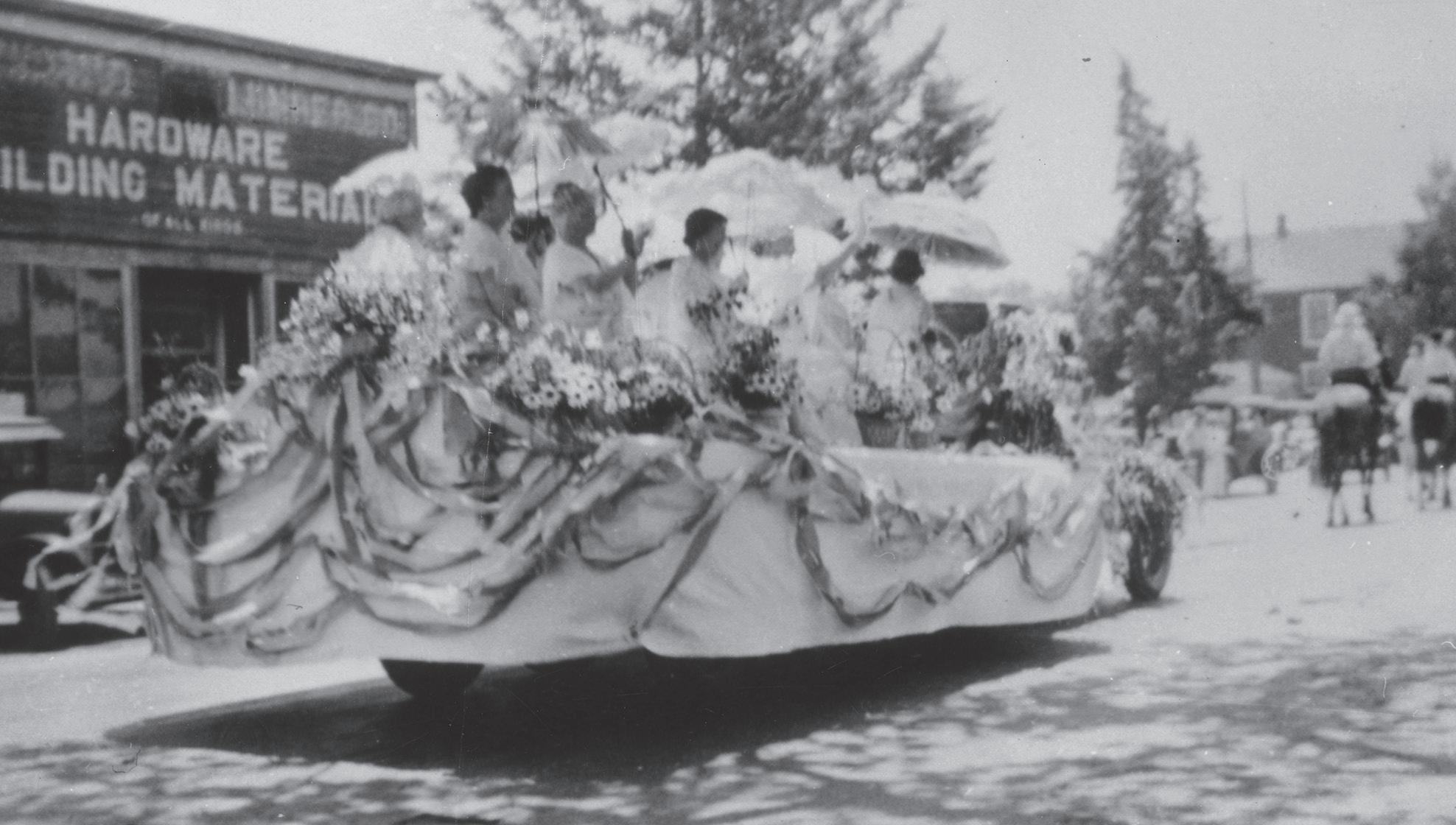

Local court officials from the Soledad Judicial District July 4, 1935
Before the Santa Clarita Valley was known as the Santa Clarita Valley, it was Soledad Township, and before it had its first Municipal Court judgeship — in 1966 — it had a “Justice Court” with a succession of locally elected community leaders (with real jobs in real life) serving as part-time judge and jury for minor crimes. The Soledad Judicial District stretched all the way from L.A. City limits to the Kern County line.

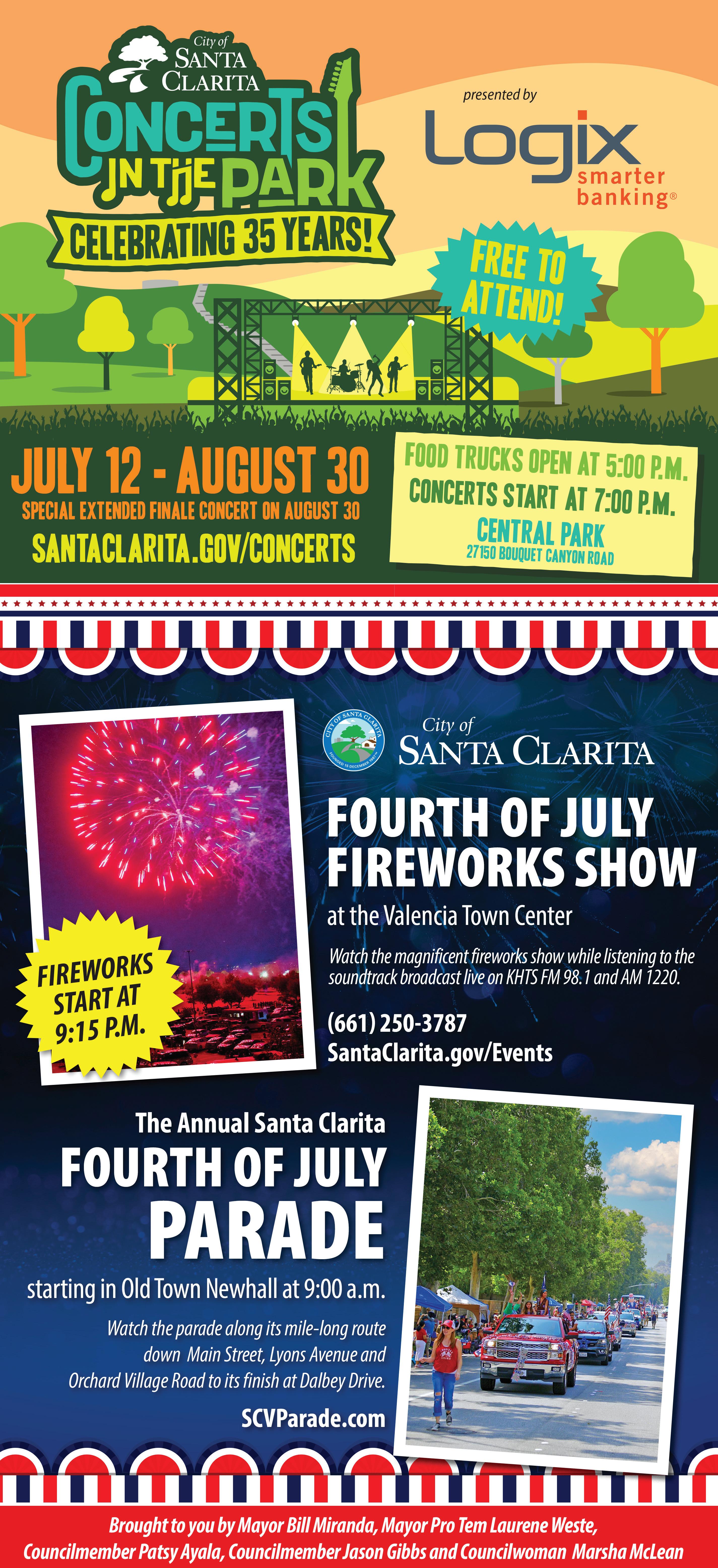



Facts about the American flag: how it came to be, the significance of its colors and how it received its nickname

National flags serve to unite citizens of a given country. Flags wave proudly in front of government buildings and schools, and they also identify athletes during international sporting competitions. In many countries, flags also serve as symbols of honor for members of the military and their families.
For more than 200 years, the American flag has been a symbol of unity and pride in the United States. The red, white and blue flag has a storied history and has gone through various incarnations. The following are some of the more interesting facts pertaining to the American flag.
Six different flag designs were flown before Betsy Ross announced that she had sewn the official American flag. These designs included a series of alternating red and white stripes, the Liberty Tree, the Sons of Liberty and the Forester flag designs. The Continental Army once used a flag featuring a snake with the mantra “Don’t Tread on Me.”
On June 14, 1777, the Second Continental Congress proposed and passed the Flag Act of 1777. This
resolution was designed to facilitate the creation of an official flag for a nation that was aiming to earn its independence from Great Britain. The flag was to have thirteen stripes, alternating red and white, with thirteen white stars on a blue field. The thirteen stars signified the original members of the Union.
The American flag remained unchanged until 1795, when the stripes and stars were increased to 15 for the addition of Kentucky and Vermont to the Union.
After seeing the new stars-and-stripes flag flying over Fort McHenry during the War of 1812, Francis Scott Key was inspired to write the poem that would eventually become the nation’s national anthem.
A sea captain from Massachusetts named William Driver named a large, 10-foot-by-17-foot flag “Old Glory” after it survived multiple defacing attempts during the American Civil War. Driver’s nickname of the flag inspired the name to be used for all American flags.
Although Flag Day was established as a formal national
holiday in 1949, it was not made a federal holiday. Flag Day is only an official holiday in the state of Pennsylvania. This may be fitting because legend holds that Betsy Ross sewed the first flag in Pennsylvania.
Today’s flag features the original 13 alternating white and red stripes (in 1818, another design went into effect, permanently setting the number of stripes at 13 in honor of the original colonies) and 50 stars to represent the states of the Union. The colors of the flag signify as follows: red for hardiness and valor, white for purity and innocence, and blue for vigilance, perseverance and justice.
The Color Association of the United States creates the palette of colors used for both private and public institutions and the U.S. Army. Mass-market flag manufacturers tend to use Pantone Matching Shade of Dark Red (193 C) and Navy Blue (281 C).
The American Flag has been a fixture of the United States for centuries and continues to serve as a symbol of pride, valor and history. (MC)
The
From the 40th Republican Assembly District Committee Chairwoman – Denise Lite Jason Gibbs, Patrick Lee Gipson, Nune Gipson, Veronica Hixson, Melissa Lundie, Daniel Maldonado, Joe Messina and Lucie Volotzky


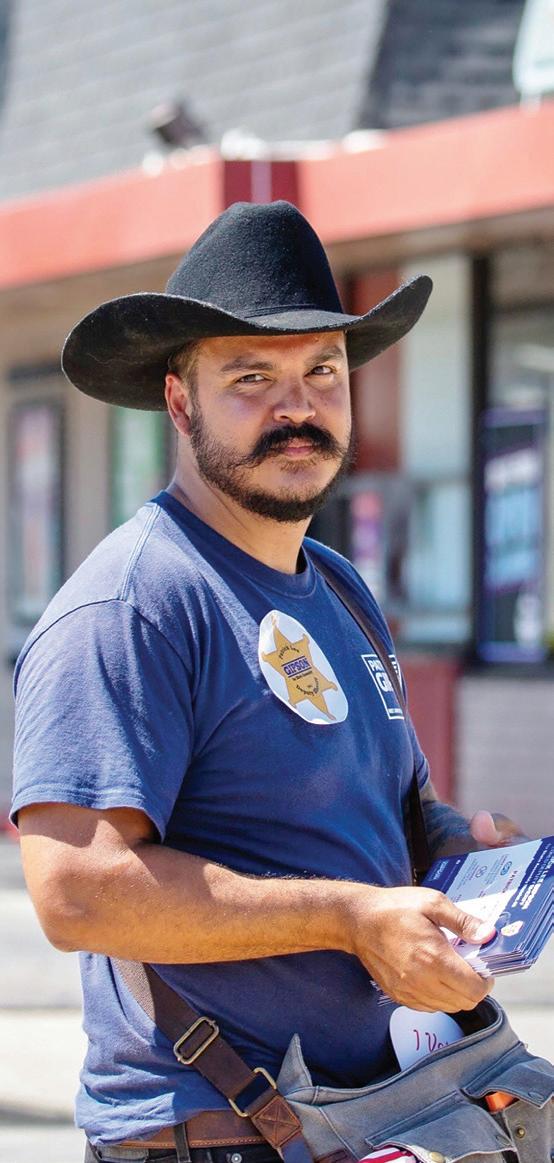







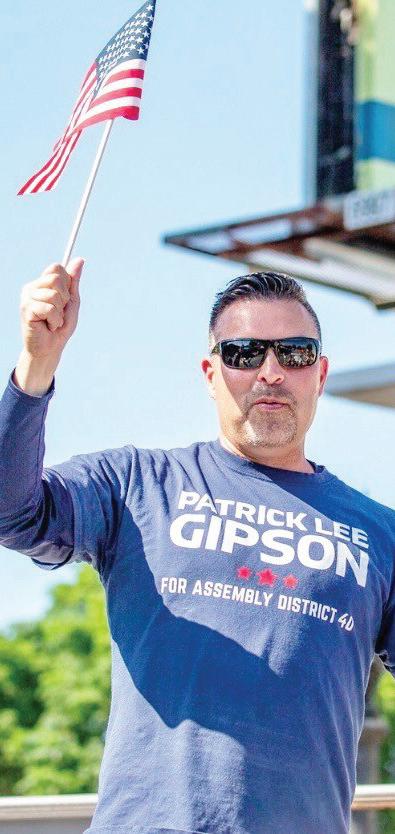












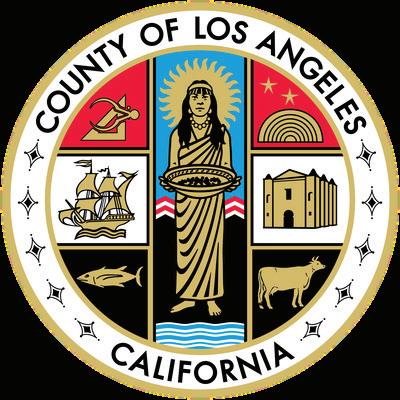







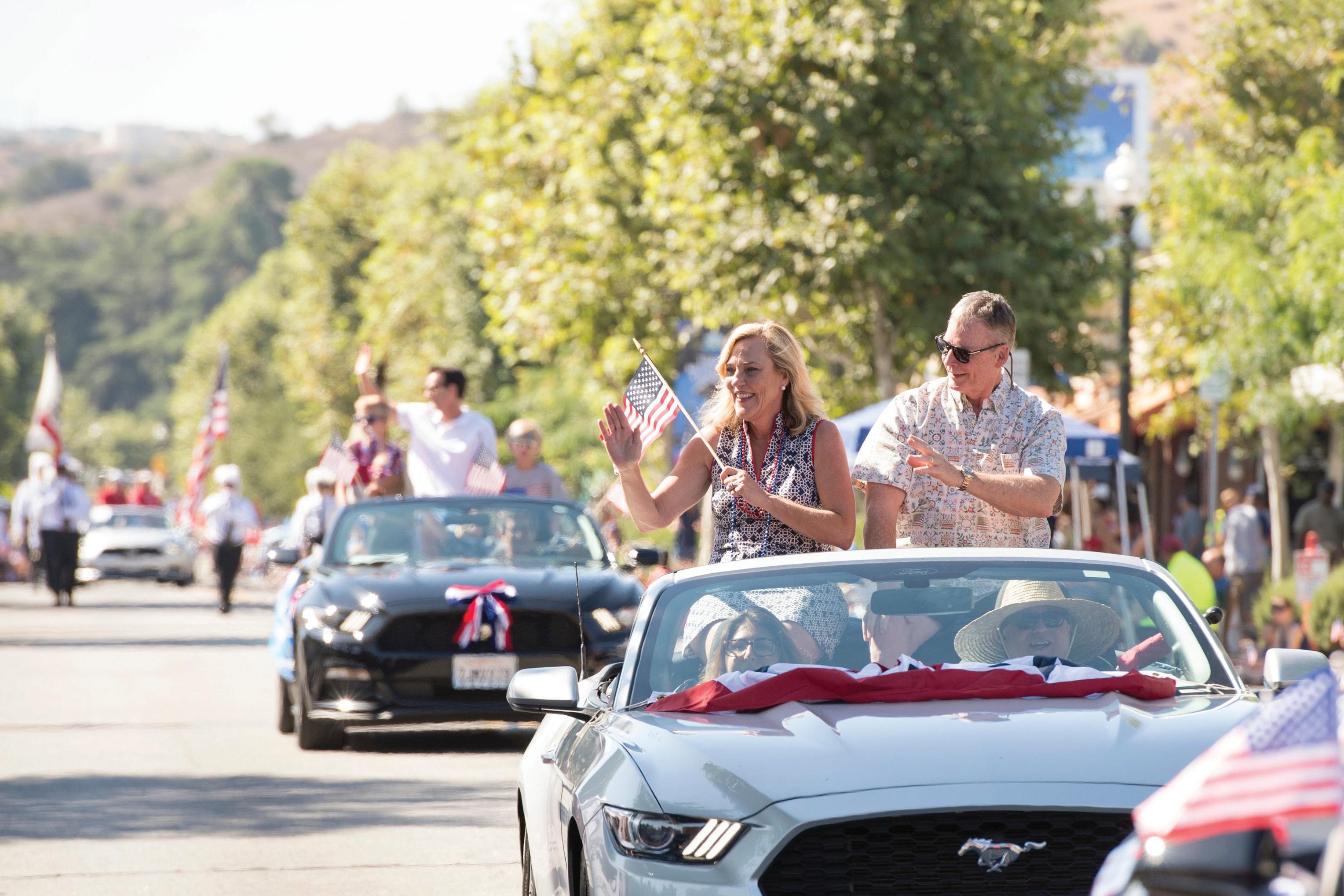










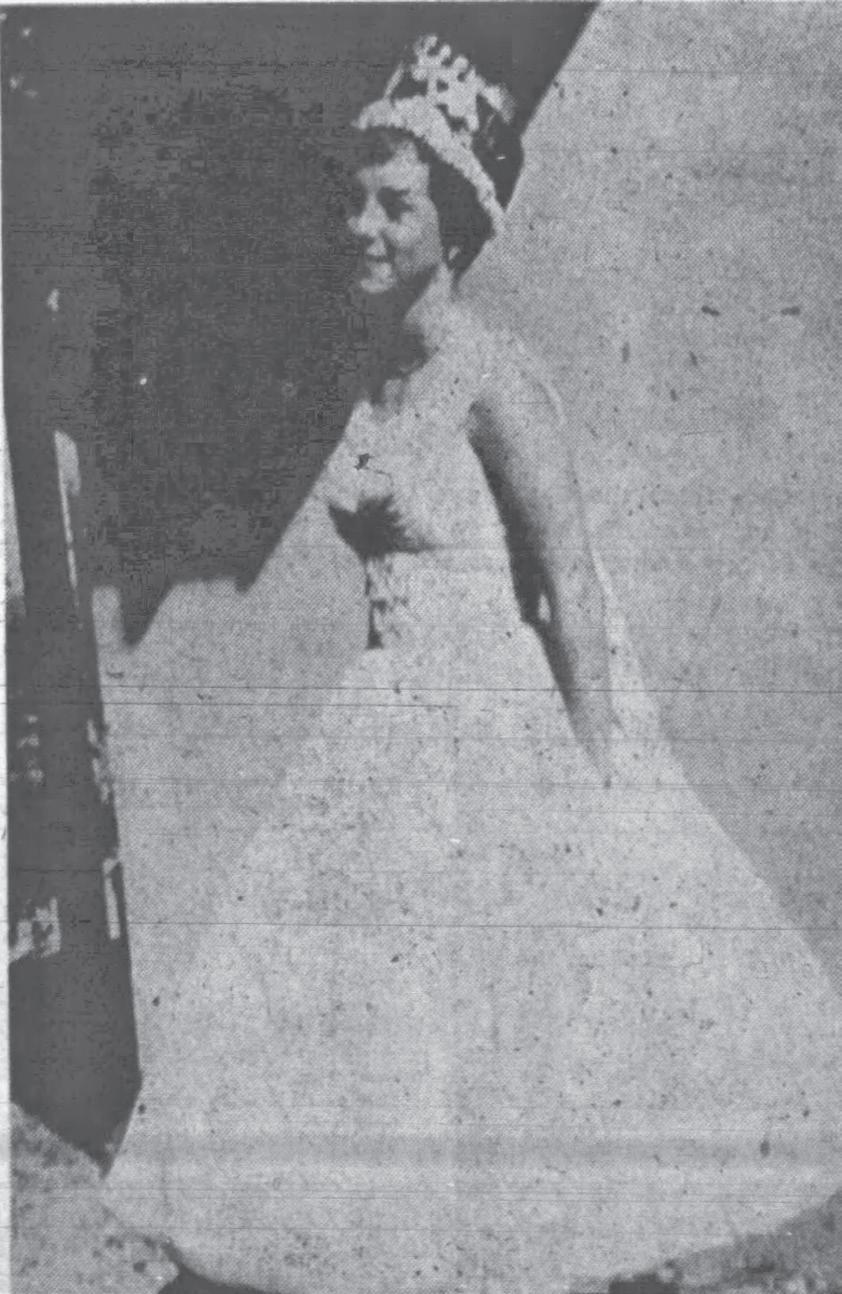






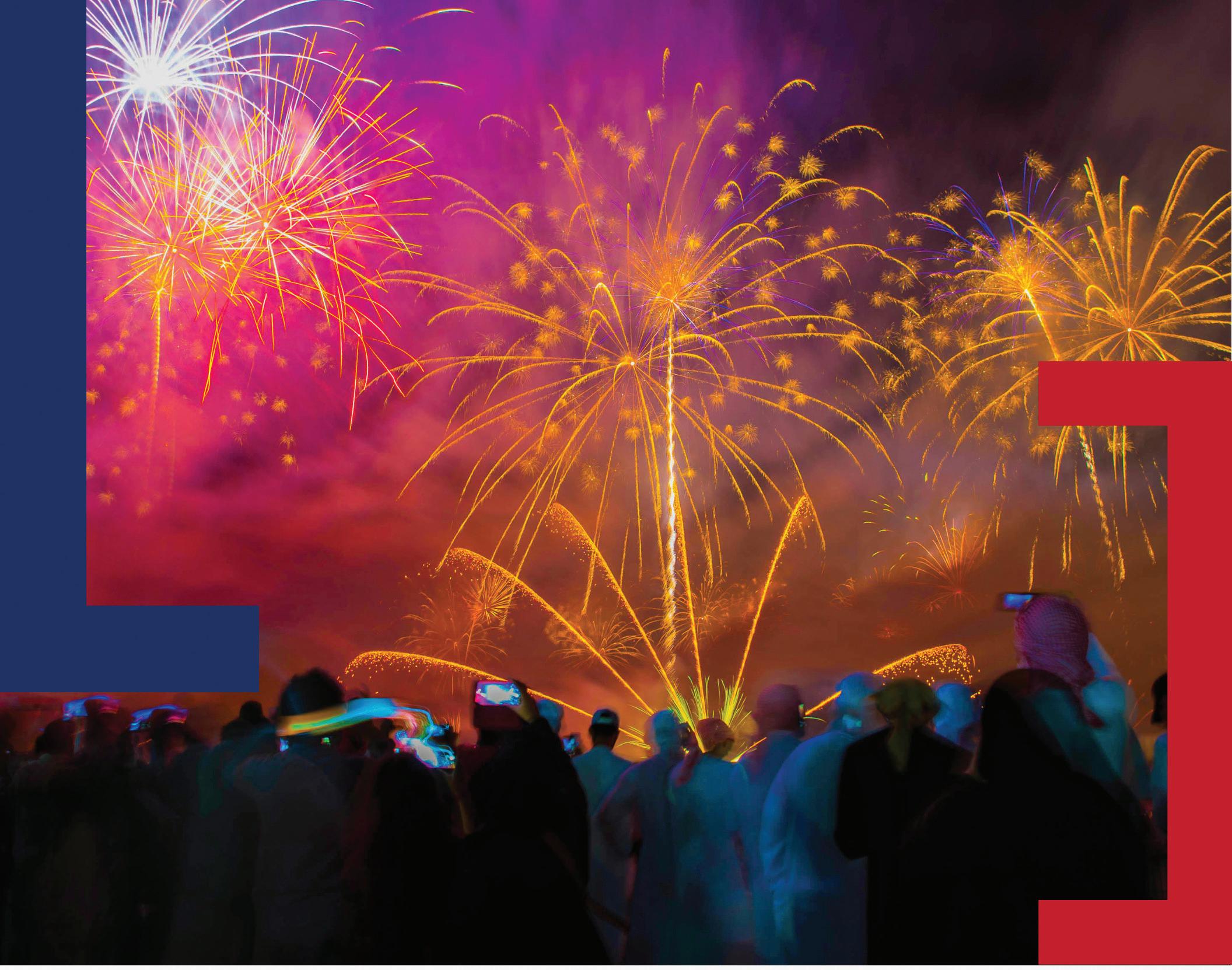


Parade
Georgia
Barbara Myler
Linda Pedersen
RJ Kelly
Patty Kelly
Skye Ostrom
John Minkus
Linda Tarnoff
Carl Kanowsky
Terry Kanowsky
Station
Station
Station
Station
Title
SCVTV
Panorama
Mac’s
Family
Point of View Communications, LLC
KHTS





